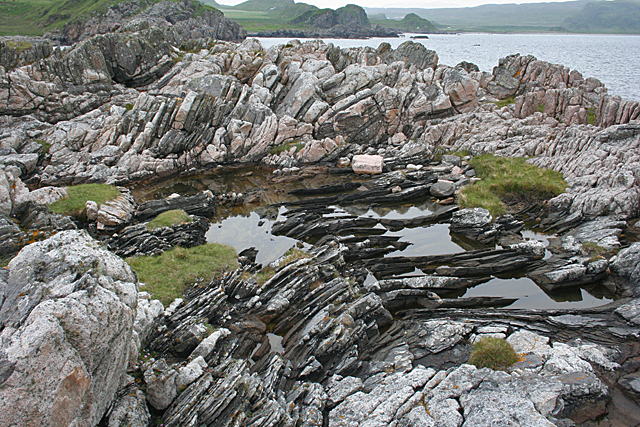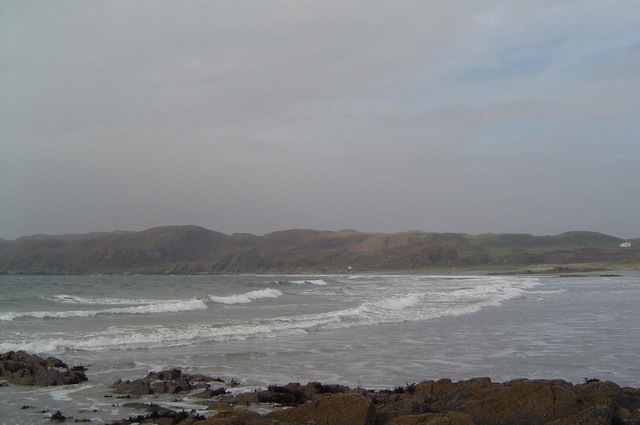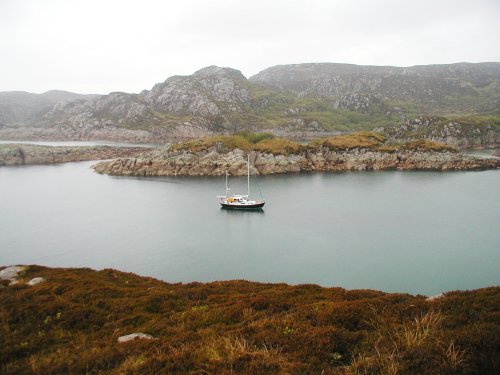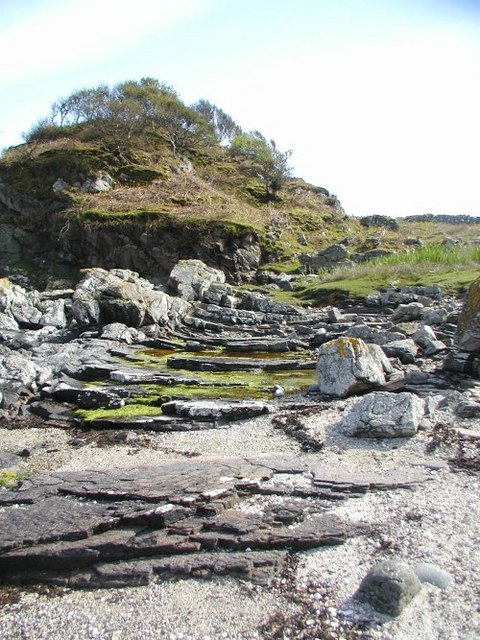Port an t-Seilich
Sea, Estuary, Creek in Argyllshire
Scotland
Port an t-Seilich

Port an t-Seilich is a small coastal village located in Argyllshire, Scotland. Situated on the western coast of the country, it is nestled between the picturesque hills and the vast expanse of the Atlantic Ocean. The name of the village translates to "Port of the Willow" in English.
The village is primarily known for its stunning natural beauty and its proximity to the sea. The open sea, estuary, and creek are all prominent features of Port an t-Seilich. The sea provides an awe-inspiring view with its deep blue waters and crashing waves, while the estuary offers a tranquil environment with its calm waters and abundant birdlife.
The creek, on the other hand, is a narrow waterway that meanders through the village, offering a charming and peaceful atmosphere. It is often used by local fishermen and boating enthusiasts, who can be seen casting their lines or navigating their boats along its gentle currents.
The village itself is a quaint and close-knit community, with a small population of residents who are primarily involved in fishing and other maritime activities. The local economy is heavily reliant on the sea, as fishing and tourism play a significant role in sustaining the village.
Visitors to Port an t-Seilich can enjoy a range of activities, including fishing, boating, birdwatching, and coastal walks. The village also offers a few amenities, such as a small harbor, a local pub, and a few shops catering to the needs of both residents and tourists.
In summary, Port an t-Seilich is a charming coastal village in Argyllshire, Scotland, with stunning sea views, a tranquil estuary, and a meandering creek. It is a haven for nature lovers, fishermen, and those seeking a peaceful retreat amidst the beauty of the Scottish coast.
If you have any feedback on the listing, please let us know in the comments section below.
Port an t-Seilich Images
Images are sourced within 2km of 56.271905/-6.2570983 or Grid Reference NM3616. Thanks to Geograph Open Source API. All images are credited.




Port an t-Seilich is located at Grid Ref: NM3616 (Lat: 56.271905, Lng: -6.2570983)
Unitary Authority: Argyll and Bute
Police Authority: Argyll and West Dunbartonshire
What 3 Words
///verb.coaching.shutting. Near Fionnphort, Argyll & Bute
Related Wikis
Ardalanish
Ardalanish (Scottish Gaelic: Àird Dealanais) is a village on the Isle of Mull in Argyll and Bute, Scotland. It is now an organic farm and weaving mill...
Knocknafenaig
Knocknafenaig (Scottish Gaelic: Cnoc na Fennaig) is a ruined township on the Isle of Mull, Scotland. Located in the south-western portion of the island...
Uisken
Uisken (Scottish Gaelic: Uisgean, meaning "water-bay") is a settlement on a sandy bay on the Ross of Mull in the south of the Isle of Mull, on the west...
Ross of Mull
The Ross of Mull (Scottish Gaelic: An Ros Mhuileach) is the largest peninsula of the Isle of Mull, about 28 kilometres (17 mi) long, and makes up the south...
Nearby Amenities
Located within 500m of 56.271905,-6.2570983Have you been to Port an t-Seilich?
Leave your review of Port an t-Seilich below (or comments, questions and feedback).















